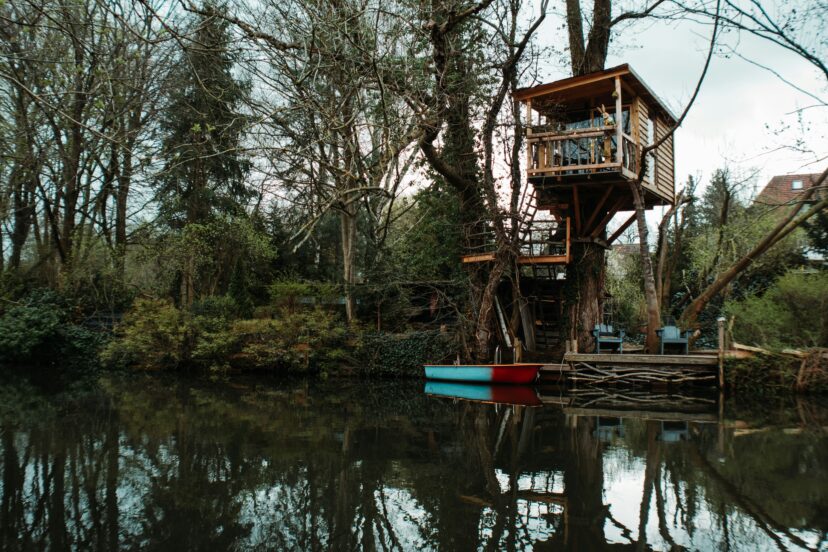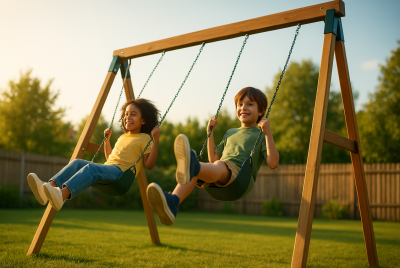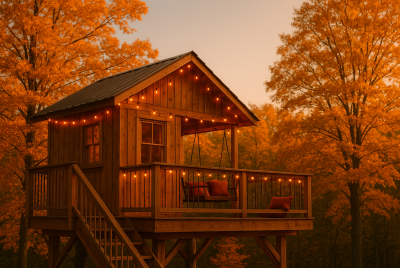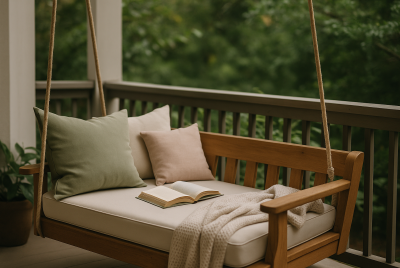Essential Safety Gear for Building a Treehouse
We may earn a commission for purchases made using our links. Please see our disclosure to learn more.
Safety should always come first, even though building a treehouse is an interesting pastime. A treehouse is a great way to engage with nature, but if you don’t have the right safety gear, it might be disastrous. Whether you’re building a fun space for the whole family or the perfect getaway for your kids, safety devices can help prevent accidents and ensure that everyone can enjoy the treehouse without worrying. In this piece, we’ll discuss the safety gear required for a treehouse and offer helpful recommendations for where to find it all.
Why Safety Gear is Crucial for Treehouse Building
The risk is in the elevation and climbing required to build a treehouse. You run the danger of falling or getting hurt if you don’t have the right safety equipment. On the other hand, safety gear serves as a barrier of protection, guaranteeing that there is something to catch you or keep you safe even in the event of a slip.
Safety Nets: The First Line of Defense
One of the most essential pieces of safety gear for a treehouse is a safety net. These nets act as a fall-prevention tool, ensuring that if someone loses balance or trips, they won’t fall to the ground.
- JumpTrzz Climbing Cargo Net: This handcrafted polyester climbing net is designed to be used as a protective barrier for treehouses. It provides an extra layer of security and ensures a safe environment. The material is durable, ensuring it can withstand outdoor weather conditions while protecting those inside.
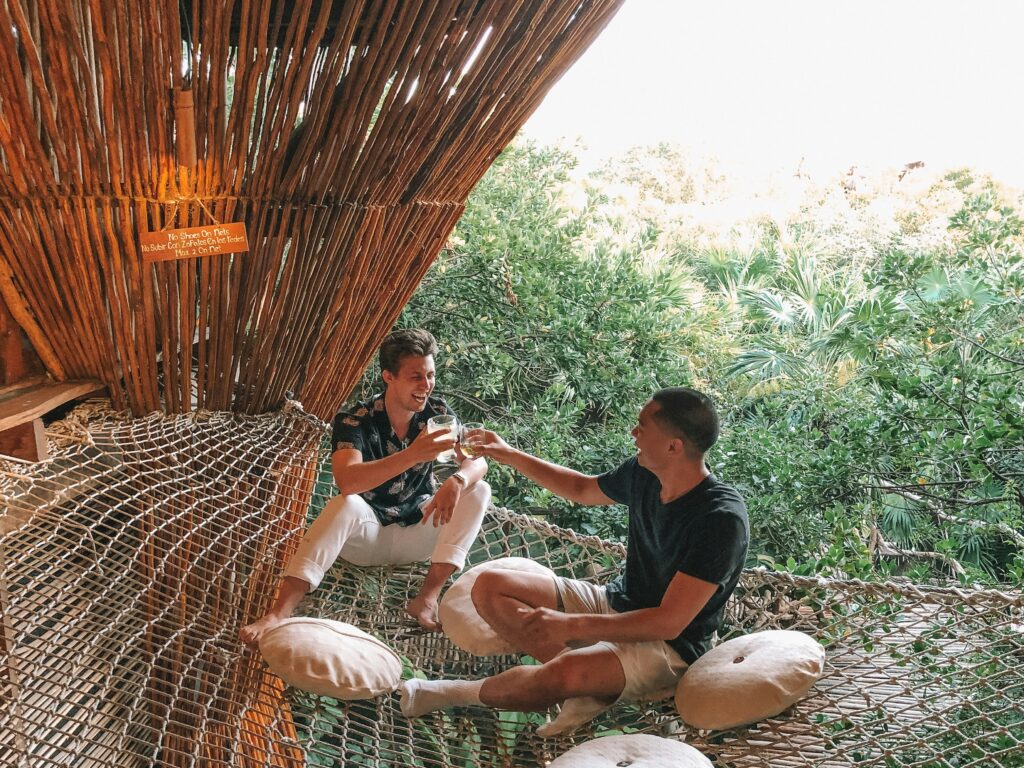
Climbing Ladders: Safe Access to Your Treehouse
Having a secure way to climb in and out of your treehouse is a non-negotiable element of safety. A sturdy ladder will ensure that everyone can access the treehouse safely.
- ISOP Tree Climbing Rope Ladder: This rope ladder is lightweight and portable, making it an excellent choice for treehouses. It ensures secure climbing, and with the proper attachment, it can give you easy access to the treehouse while preventing slips.
Fall Protection Harness: Stay Secure When Building or Playing
One of the most crucial safety items you can purchase for building or using a treehouse is a fall prevention harness. Whether you’re climbing up to perform maintenance or working on a high platform, a harness guarantees that you stay attached to the treehouse or another nearby support.
- LPIW Climbing Net with Harness: This climbing net with an integrated safety harness ensures that anyone working in or around the treehouse is protected from falls. The harness is adjustable, making it a versatile choice for different users.
Safety Belts: Stability During Construction
When building your treehouse, you’ll likely be working on high platforms or balancing on uneven surfaces. A safety belt can give you the stability you need to stay secure during the construction process.
- NTR Fall Protection Lanyard: This adjustable safety lanyard can secure you while working on the treehouse, giving you peace of mind. It provides a solid anchor point and ensures that you can focus on your task without worrying about falling.
Playground Handles: Grab-and-Go Stability
A simple addition to your treehouse design that can drastically improve safety is the installation of playground handles. These handles provide something solid to grab onto when climbing in and out of the treehouse.
- Dolibest Safety Playground Handles: These handles are durable, non-slip, and designed to withstand outdoor play. Placing them near climbing areas ensures that everyone has extra support when maneuvering around the treehouse.
Non-Slip Flooring: Avoid Slips and Falls
Slippery surfaces in a treehouse can lead to serious accidents. Opt for non-slip flooring to ensure secure footing.
Building Strong Railings: Preventing Accidental Falls
Having strong railings around your treehouse is a key safety feature. They act as a barrier and prevent anyone from falling off the edge.
- HandAcc Kids Climbing Belt: While not a traditional railing, the kids climbing belt provides an extra level of safety by securing children during their playtime. These belts can be used with railings or as an additional support tool for younger climbers.
Secure Tree Attachments: Sturdy and Reliable
The most important part of any treehouse is how it’s attached to the tree. If the treehouse isn’t securely fastened, no amount of safety gear will protect you.
- 2.5M Safety Balcony Fire Escape Ladder: In addition to providing an emergency exit, this safety ladder can also act as a secondary attachment point for added stability during construction.
Regular Inspections: Keep Your Treehouse Safe for Years
Safety doesn’t stop after construction. Regularly inspecting your treehouse for wear and tear is key to maintaining its safety over time. Check for loose bolts, worn-out safety gear, or damage to the structure.
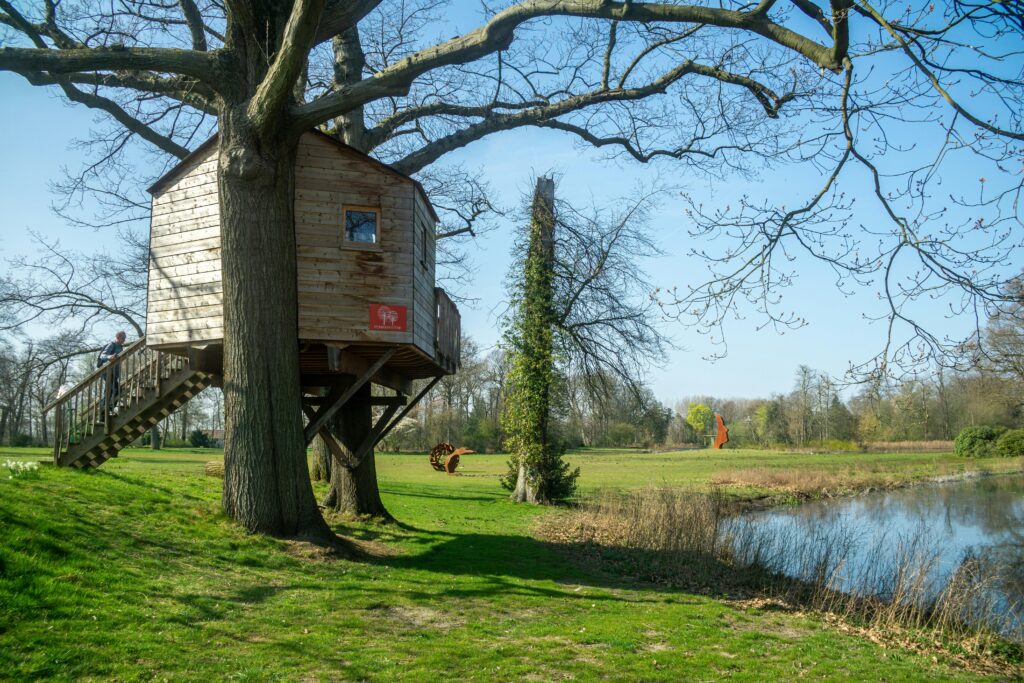
Scientific Insights on Treehouse Safety and Injury Prevention
Treehouses, while exciting and adventurous, can pose significant safety risks, especially for children. A study titled “Pediatric Tree House–Related Injuries Treated in Emergency Departments in the United States, 1990–2006” found that falls from heights greater than 10 feet were a common cause of injury, affecting boys and children aged 10 to 19 more frequently than other groups. This research highlights the importance of designing treehouses with safety features that minimize fall risks. Furthermore, the Center for Injury Research and Policy at Nationwide Children’s Hospital recommends specific guidelines to improve safety, such as building treehouses no higher than 10 feet off the ground, using solid barrier walls, and ensuring protective surfacing underneath to cushion falls. These insights stress the need for standardized safety measures to prevent injuries and create safer treehouse experiences.
Conclusion: Build Safely, Enjoy the Adventure
One of the most satisfying do-it-yourself tasks is building a treehouse. However, it is essential to make sure that the treehouse is safe for all users. Using the proper safety equipment, such as harnesses, safety belts, and climbing nets, creates a safe atmosphere for years of enjoyment. Remember these tools both when you’re building your treehouse and when you’re using it.
FAQs About Treehouse Safety Gear
1. What’s the most important safety gear for building a treehouse?
Safety nets, secure ladders, fall protection harnesses, and strong railings are the most crucial items to ensure your treehouse is safe.
2. Do I need a safety net even for adults?
While safety nets are often used for children, they can also provide peace of mind for adults, especially if the treehouse is high up.
3. Can I build a treehouse without a harness?
It’s possible, but a harness adds an extra level of safety, especially when working at height. It’s highly recommended during construction.
4. How often should I check the safety gear?
Check the safety gear and structural integrity of your treehouse at least once a year, or more frequently if it’s used often.
5. Are there any treehouse safety features specifically for kids?
Yes! In addition to nets and sturdy railings, consider adding soft landing pads, gates, or child-friendly harnesses to enhance safety for young users.

